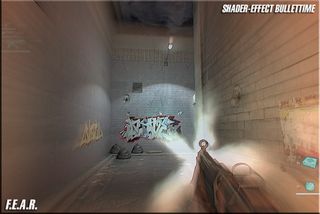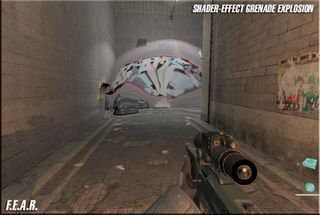New 3D Graphics Card Features in 2006
Introduction

Without special effects, the 3D environment and textures are portrayed as being crystal clear.
Shader effects on water surfaces become astounding with DirectX 8. One of the earliest graphics cards to attempt to make use of them were the Geforce 4 and Radeon 9600 in the game Morrowind. For the first time, the water realistically reflected the 3D landscapes in the waves. Even better, the effects on the water were there to admire throughout the entire game. Running or swimming through water even created displacement, causing waves on the reflective surface.
After this, however, the paths of shader versions diverged. NVIDIA stayed with Version 2, while ATI upgraded its new graphics boards to support PixelShader 2.1. Since the introduction of Geforce 6, DirectX 9 effects with the PixelShader 3 have become mainstream. The new richness was first seen in the game Splinter Cell 3 - Chaos Theory.
The latest graphics chips from ATI and NVIDIA now ensure adequate 3D performance, permitting smooth enjoyment of the graphics quality they provide. The Radeon X1000 series and the Geforce 7 now come complete with PixelShader Version 3 support, and form the basis of a new generation of graphics capabilities. From now on, terms like parallax mapping and HDR rendering will be part of the 3D vocabulary. The obvious improvements in the new shader are found in light and shadows, optical distortions, and reflective or animated surfaces. Here are some examples of current graphics effects.

"Bullet time", as the slow-motion function in PC games is known, produces environmental time-based distortions. Bullet time first made its appearance in the film "The Matrix". The trajectories of single pistol bullets were visualized in the form of small shockwaves. On PCs, the effect made its debut in the game Max Payne. Among the latest games, F.E.A.R. creates a rush of adrenalin by optically distorting the range of vision.

The shockwave produced by a grenade is visualized in F.E.A.R. by an optical distortion bubble.
Stay on the Cutting Edge
Join the experts who read Tom's Hardware for the inside track on enthusiast PC tech news — and have for over 25 years. We'll send breaking news and in-depth reviews of CPUs, GPUs, AI, maker hardware and more straight to your inbox.
